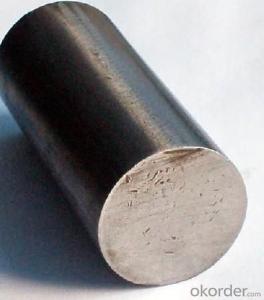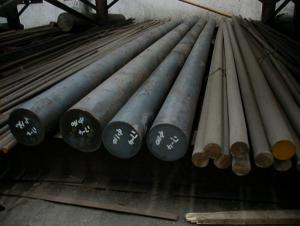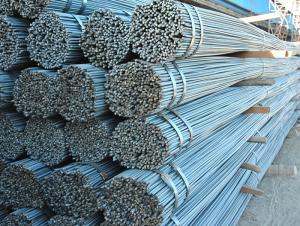Round Bar Q235 5MM-100MM Hot Rolled High Quality Q195
- Loading Port:
- China Main Port
- Payment Terms:
- TT or LC
- Min Order Qty:
- -
- Supply Capability:
- -
OKorder Service Pledge
OKorder Financial Service
You Might Also Like
Product Description:
OKorder is offering Round Bar Q235 5MM-100MM Hot Rolled High Quality Q195 at great prices with worldwide shipping. Our supplier is a world-class manufacturer of steel, with our products utilized the world over. OKorder annually supplies products to European, North American and Asian markets. We provide quotations within 24 hours of receiving an inquiry and guarantee competitive prices.
Product Applications:
1) Suitable for making various strong cutting tool abrasion resistance, impact resistance.
2) Used to produce all kinds of high hard and super hard saw blade, drill, tap, broach, gear hob and various kinds of milling cutter.
3) Used for advanced punching die, screw die, and the toughness and complicated shape of the punch, etc.
4) Is used for cold forging die and drawing mode, etc.
5) Recommended watchcase factory, screw factory and other cold stamping products industry use.
Product Advantages:
OKorder's Round Bar Q235 5MM-100MM Hot Rolled High Quality Q195 are durable, strong, and resist corrosion.
Main Product Features:
· Premium quality
· Prompt delivery & seaworthy packing (30 days after receiving deposit)
· Corrosion resistance
· Can be recycled and reused
· Mill test certification
· Professional Service
· Competitive pricing
Product Specifications:
1. Grade: GB, JIS, ASTM, EN
2. Grade: Q235, SS400, A36, S235JR
3. Diameter and mass: As below
Diameter | Mass | Diameter | Mass | Diameter | Mass |
(mm) | (kg/m) | (mm) | (kg/m) | (mm) | (kg/m) |
6 | 0.22 | 22 | 2.98 | 53 | 17.30 |
7 | 0.30 | 24 | 3.55 | 56 | 19.30 |
8 | 0.40 | 25 | 3.85 | 60 | 22.20 |
9 | 0.50 | 26 | 4.17 | 63 | 24.50 |
10 | 0.62 | 28 | 4.83 | 65 | 26.00 |
11 | 0.75 | 30 | 5.55 | 70 | 30.20 |
12 | 0.89 | 32 | 6.31 | 75 | 34.70 |
13 | 1.04 | 34 | 7.13 | 80 | 39.50 |
14 | 1.21 | 36 | 7.99 | 85 | 44.50 |
15 | 1.39 | 38 | 8.90 | 90 | 49.90 |
16 | 1.58 | 40 | 9.86 | 95 | 55.60 |
17 | 1.78 | 42 | 10.90 | 100 | 61.70 |
18 | 2.00 | 45 | 12.50 | 120 | 88.85 |
19 | 2.23 | 48 | 14.20 | 140 | 120.93 |
20 | 2.47 | 50 | 15.40 | 150 | 138.82 |
4. Material: Mild Steel
5. Heat treatment of high quality steel:
Fire: Isothermal annealing temperature is 800 ~ 880 °C, with 10 ~ 20 °C, the furnace cooling to about 600 °C, hardness above HB269.
Preheat temperature: 730-730 °C
Quenching temperature: 1190-1210 °C
Tempering temperature: 540-595 °C
Cold drawn, hardness 285 HBS
Cold drawn after annealing condition, hardness 277 HBS
Quenching methods: oil quenching, air cooling or salt bath quenching
FAQ:
Q1: Why buy Materials & Equipment from OKorder.com?
A1: All products offered byOKorder.com are carefully selected from China's most reliable manufacturing enterprises. Through its ISO certifications, OKorder.com adheres to the highest standards and a commitment to supply chain safety and customer satisfaction.
Q2: How do we guarantee the quality of our products?
A2: We have established an advanced quality management system which conducts strict quality tests at every step, from raw materials to the final product. At the same time, we provide extensive follow-up service assurances as required.
Q3: The products are invoicing on theoritical weight or on actual weight?
A3: We can do it in both manners, according to the customers' request.
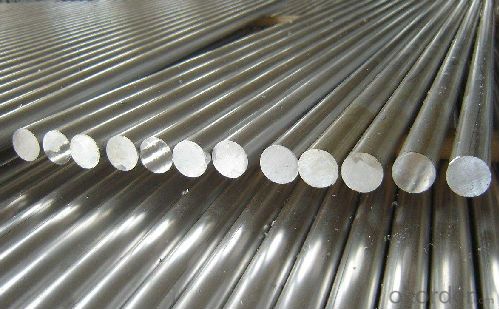
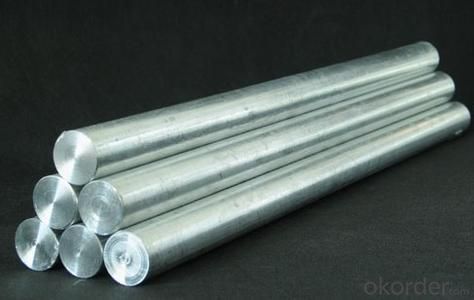
- Q:Are square steel, rectangular tube and angle steel shaped or light steel?
- Light steel is also a relatively vague term, generally can have two kinds of understanding. One is the current "code for design of steel structures" (GBJ 17-88) in the eleventh chapter "bar, small angle light steel structure", refers to the use of steel and light steel structure is less than L45*4 and L56*36*4 angle steel production, mainly in the lack of time for small steel structure manufacturing of reinforced concrete structure should not be used, has been basically not used, so the revised code for design of steel structures has been basically removed this tendency. The other is the "Regulations" technology of steel structure of light-weight buildings with gabled frames with light roof and wall light (also has the condition to use the masonry wall) single portal frame structure, the light here mainly refers to the enclosure is made of light material. Since the former has been cancelled soon, the meaning of "light steel" mainly refers to the latter
- Q:Can steel round bars be used in the manufacturing of conveyor systems?
- Yes, steel round bars can be used in the manufacturing of conveyor systems. Steel round bars are often used as the main structural component for conveyor systems due to their durability, strength, and ability to withstand heavy loads. They provide stability and support for the conveyor belt, rollers, and other components, making them an ideal choice for conveyor system construction.
- Q:Can steel round bars be galvanized?
- Indeed, it is possible to galvanize steel round bars. Galvanization is a technique that entails applying a protective zinc coating to the steel surface to prevent corrosion. This technique can be employed on various steel products, including round bars. By galvanizing steel round bars, not only is their resistance to corrosion enhanced, but also their durability and lifespan. The galvanization process entails immersing the round bars in a bath of molten zinc, which adheres to the steel and forms a protective layer. This layer serves as a barrier, safeguarding the steel from moisture, chemicals, and other corrosive elements. Consequently, galvanized steel round bars are extensively used in outdoor applications, such as construction, fencing, and marine environments, where they are exposed to harsh conditions.
- Q:What are the different grades of alloy steel round bars for automotive applications?
- Alloy steel round bars are commonly used in automotive applications due to their excellent strength, durability, and resistance to wear and corrosion. These bars are typically graded based on their chemical composition, mechanical properties, and suitability for specific automotive uses. Here are some of the different grades of alloy steel round bars commonly used in automotive applications: 1. 4140/42CrMo4: This is a widely used grade of alloy steel round bars known for its high tensile strength, good toughness, and excellent fatigue strength. It is commonly used in applications such as gears, crankshafts, axles, and suspension components. 2. 8620: This grade of alloy steel round bars offers excellent hardenability and can be heat treated to achieve high strength and toughness. It is commonly used in applications such as shafts, gears, and camshafts. 3. 4340: This grade of alloy steel round bars is known for its high strength and toughness. It offers good wear resistance and can be heat treated to achieve even higher hardness and strength. It is commonly used in applications such as connecting rods, crankshafts, and high-stress components. 4. 52100: This is a high carbon, chromium alloy steel known for its excellent hardness and wear resistance. It is commonly used in applications such as bearings and races, where high strength and durability are required. 5. 316L: This grade of alloy steel round bars is known for its excellent corrosion resistance, particularly in harsh environments. It is commonly used in automotive applications such as exhaust systems, where resistance to corrosion is critical. 6. 4340M: This is a modified version of the 4340 grade, specifically designed for high-performance automotive applications. It offers improved fatigue strength and toughness, making it suitable for demanding applications such as high-performance engine components. These are just a few examples of the different grades of alloy steel round bars used in automotive applications. The specific grade chosen depends on the requirements of the application, including the desired strength, toughness, wear resistance, and corrosion resistance.
- Q:Are steel round bars resistant to abrasion?
- Steel round bars are typically resistant to abrasion. Steel is renowned for its strength and durability, allowing it to withstand the effects of friction and contact with other surfaces. However, the degree of abrasion resistance can differ based on the particular steel type and composition. Some steel grades, like hardened or alloy steels, are specifically engineered to possess enhanced resilience against abrasion. These steels undergo procedures like heat treatment or alloying to enhance their hardness and augment their ability to endure abrasion. All in all, steel round bars are a dependable option for situations where abrasion resistance is crucial.
- Q:Can steel round bars be used for drive shaft applications?
- Yes, steel round bars can be used for drive shaft applications. Drive shafts are responsible for transmitting torque and rotational motion from the engine to the wheels or other components in various mechanical systems such as automobiles, industrial machinery, and even boats. Steel round bars possess excellent mechanical properties, including high strength, durability, and toughness, which are crucial for withstanding the stresses and loads imposed during operation. They also exhibit good fatigue resistance, allowing them to endure repeated loading cycles without failure. Furthermore, steel round bars can be accurately machined to meet the required dimensions and tolerances for drive shaft applications. They can be heat-treated to enhance their strength and hardness or surface treated to improve corrosion resistance if necessary. Overall, steel round bars are a popular choice for drive shaft applications due to their combination of strength, durability, and machinability, making them well-suited for transmitting power efficiently and reliably in various mechanical systems.
- Q:What is the difference between a centerless ground and a precision ground steel round bar?
- The manufacturing process and resulting quality of the finished product distinguish a centerless ground steel round bar from a precision ground one. The centerless ground steel round bar is produced through a machining technique known as centerless grinding. This involves placing the steel bar between two grinding wheels, one rotating rapidly and the other remaining stationary. The rotating wheel removes material from the bar's surface, resulting in a smooth and uniformly-sized round shape. Centerless grinding is renowned for its ability to achieve bars with precise tolerances and excellent surface finish. Contrarily, the precision ground steel round bar is manufactured using a distinct process called precision grinding. In precision grinding, the steel bar is firmly held in a chuck or fixture and rotated against a grinding wheel. The grinding wheel eliminates material from the bar's surface, yielding an accurate round shape with tight tolerances. Precision grinding is commonly employed when a higher level of accuracy is necessary, particularly in applications where the bar will function as a critical component in machinery or tools. In conclusion, both centerless ground and precision ground steel round bars offer exceptional dimensional accuracy and surface finish. However, centerless grinding proves to be a more efficient and cost-effective method for producing large quantities of round bars with consistent quality, while precision grinding is preferred for applications that demand the utmost level of dimensional accuracy and surface finish.
- Q:How do steel round bars compare to wrought iron bars?
- Steel round bars and wrought iron bars have several differences that set them apart. Firstly, steel round bars are made from an alloy of iron and carbon, whereas wrought iron bars are composed of pure iron with a low carbon content. This difference in composition leads to varying properties. Steel round bars are known for their strength and durability, making them suitable for a wide range of applications, including construction, manufacturing, and engineering. On the other hand, wrought iron bars are softer and more malleable, allowing them to be easily shaped and formed into intricate designs. This characteristic makes wrought iron bars popular in decorative applications such as gates, fences, and ornamental pieces. Another difference lies in their manufacturing processes. Steel round bars are typically produced through hot rolling, which involves heating the steel billet and passing it through a series of rollers to shape it into the desired round bar form. In contrast, wrought iron bars are made through a labor-intensive process called blacksmithing. This involves heating the iron and repeatedly hammering it to remove impurities and create a fibrous structure, resulting in its characteristic grainy appearance. In terms of cost, steel round bars are generally more affordable compared to wrought iron bars. The manufacturing process for steel is more streamlined and efficient, leading to lower production costs. Wrought iron bars, on the other hand, require more time and labor, making them more expensive. Finally, when it comes to corrosion resistance, steel round bars have an advantage. Steel can be further alloyed with elements such as chromium, nickel, and molybdenum to enhance its resistance to rust and corrosion. This makes steel round bars suitable for outdoor applications where they may be exposed to moisture and harsh environmental conditions. Wrought iron bars, although they possess some level of corrosion resistance, are more prone to rusting and require regular maintenance to prevent deterioration. In conclusion, steel round bars and wrought iron bars differ in terms of composition, strength, manufacturing process, cost, and corrosion resistance. The choice between the two will depend on the specific requirements of the application, with steel round bars being favored for their strength and affordability, while wrought iron bars are often chosen for their malleability and decorative appeal.
- Q:Can steel round bars be used in the manufacturing of bicycles?
- Indeed, bicycles can be manufactured using steel round bars. These bars are commonly utilized in multiple aspects of bicycle construction, including the frame, handlebars, cranksets, and seatposts. Steel, being a robust and enduring material, can withstand the strains and pressures associated with cycling. Moreover, it is comparatively affordable when compared to alternatives like carbon fiber. By employing steel round bars, the necessary strength and stability required for a bicycle's structural components are guaranteed, thereby ensuring a secure and dependable ride. Furthermore, steel can be easily manipulated and shaped to conform to the specific design prerequisites of a bicycle, making it a versatile material for manufacturing purposes. All in all, the bicycle industry frequently favors steel round bars due to their resilience, sturdiness, and cost-effectiveness.
1. Manufacturer Overview |
|
|---|---|
| Location | |
| Year Established | |
| Annual Output Value | |
| Main Markets | |
| Company Certifications | |
2. Manufacturer Certificates |
|
|---|---|
| a) Certification Name | |
| Range | |
| Reference | |
| Validity Period | |
3. Manufacturer Capability |
|
|---|---|
| a)Trade Capacity | |
| Nearest Port | |
| Export Percentage | |
| No.of Employees in Trade Department | |
| Language Spoken: | |
| b)Factory Information | |
| Factory Size: | |
| No. of Production Lines | |
| Contract Manufacturing | |
| Product Price Range | |
Send your message to us
Round Bar Q235 5MM-100MM Hot Rolled High Quality Q195
- Loading Port:
- China Main Port
- Payment Terms:
- TT or LC
- Min Order Qty:
- -
- Supply Capability:
- -
OKorder Service Pledge
OKorder Financial Service
Similar products
New products
Hot products
Related keywords



























